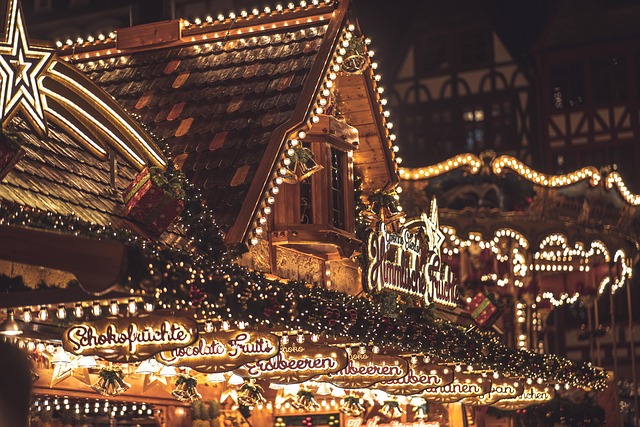
Episode from
Historical City Deep Dives

Marrakech
the last 200 years
9m 37s
Duration
4.7
Rating
3K
Plays
Transcript
Imagine we’re standing outside the ochre walls of the ancient city of Marrakech, with the Atlas mountains as a dramatic backdrop. A cacophony of sounds fills the air—vendors hawking their wares, the distant call to prayer, and the clip-clop of horse-drawn carriages. We begin our journey in the early 19th century, a period marked by political shifts and vibrant cultural life. Marrakech was just rebounding from the tumult induced by the previous century’s instability. Sultan Mawlay Abd al-Rahman ascended to the throne in 1822, bringing a renewed sense of order. His reign was a turning point, nurturing trade and nurturing ties with Europe. *“The city is a blend of beauty and mystery,”* wrote a visiting French diplomat, capturing the era’s essence. As we explore this transformative time, visualize the markets teeming with spices and art, a testament to Marrakech's enduring allure. Fast-forward to the late 19th century, and Marrakech is weaving through the threads of modernity and tradition. Marrakshi society felt the gentle but persistent ripples of European colonial interests. By the 1860s, treaties opened Morocco to foreign trade, symbolized by the bustling Mellah (Jewish Quarter). Here, Marrakech's Jewish community thrived, contributing to the city's economic and cultural fabric. *A merchant once lamented,* 'Times have changed, and with them, our fortunes,’ as he navigated the bustling souks. With every corner turned, a new story unfolds in Marrakech's labyrinthine streets. Visit the Mellah today, and you can still feel echoes of its vibrant past. Just off Rue de la Kasbah, nestled near the majestic Badii Palace, this quarter is a poignant reminder of a vibrant era. With dusty tales imbued in its stones, Marrakech’s streets serve as living museums of memory and tradition. As the 20th century dawned, Marrakech was entering an era of profound transitions. The year was 1912, and the French protectorate began, heralding a period of infrastructural advancements and urban planning. Picture yourself on Avenue Mohammed V, a thoroughfare laid out by the French, serving as a modern spine through the city. This period brought mixed sentiments; while economic prospects soared, cultural tensions simmered. A local artisan reminisced, *‘The city danced on the delicate balance between the old walls and new horizons.’* With French influence came Art Deco architecture mingling with traditional riads, crafting the unique aesthetic that defines parts of Marrakech today. The Majorelle Garden—an oasis crafted by French painter Jacques Majorelle in the 1920s—stands as a vibrant testament to this artistic mosaic. Strolling through its cobalt-blue laced paths transports one into a world where cultures converge. The mid-20th century saw the city vibrating with the pulse of independence movements. By 1956, Morocco emerged from colonial rule, ushering in a new chapter. Marrakech, with its symbolic red walls, became a beacon of national pride. Visualize the cascading fountains in the Agdal Gardens, where celebrations resonated with hope. *‘Our land breathes under our own sky again,’* a local elder observed, capturing the collective relief. This era was characterized by an effusion of indigenous art, with musicians like the famous Gnawa ensembles captivating audiences with their spiritual rhythms. As you delve into the medina’s narrow lanes, you’ll find artisans perpetuating age-old crafts beside newer shops, underscoring a society bridging the past and present. The nuanced flavors of Moroccan cuisine also reflect this dynamic, with places like Djemaa el-Fnaa square serving as gastronomic crossroads, rich with history’s taste and present’s innovation. Venture into the late 20th century, a time that saw Marrakech embracing rapid modernization while holding tight to its rich heritage. In the 1980s and 1990s, global attention turned towards this enchanting city as it became a haven for artists and celebrities alike. Imagine standing in the shadow of the Koutoubia Mosque, its towering minaret a silent witness to stories timeless and new. *An artist mused,* ‘The city whispers its secrets to those who listen.’ As international influences seeped in, Marrakech's cultural tapestry expanded, nurturing a vibrant arts scene. Galleries emerged, showcasing both contemporary Moroccan art and traditional craftsmanship. In Gueliz, a neighborhood known for its French architectural influences, you’ll find cafés and art spaces where creativity thrives. Stroll through the Jardin Menara, and amidst modernist sculptures, feel the seamless blend of innovation with the enduring spirit of the city’s past. Stepping into the 21st century, Marrakech balances its heritage with the pressing demands of the modern world. Its reputation as a vibrant tourist destination has flourished, yet the city grapples with preserving its authentic soul amidst the flux of globalization. Picture yourself in the lively Djemaa el-Fnaa—alive with acrobats, storytellers, and musicians, an emblem of the city’s cultural resilience. *‘Marrakech is a living paradox, always evolving but rooted in its history,’* a local historian reflects. As you wander through the bustling souks, the aroma of spices tickles your senses, and the artisans’ dedication to their crafts remains indomitable. Yet, alongside this timeless spirit, eco-tourism initiatives have emerged, encouraging sustainable interactions with the city’s delicate environment. Stand at the gates of the Cyber Park Arsat Moulay Abdeslam, a green innovation connecting tradition with technology, symbolizing Marrakech’s path into the future. As we conclude our journey, it’s clear that Marrakech is a city of enduring allure and dynamic change. From its bustling souks and historic architecture to its vibrant arts scene, Marrakech embodies a harmonious blend of past and present. Imagine standing atop the Saadian Tombs, gazing across a city that has witnessed centuries of transformation. *‘Each stone, each alleyway tells a story,’* said a seasoned guide who spent decades sharing the city's secrets. Looking ahead, Marrakech faces challenges and opportunities in a rapidly changing world—from sustainable tourism to preserving its cultural identity. With plans for new cultural initiatives, including expanding museums and art festivals, the city is poised at the intersection of history and innovation. Its future promises to be as captivating as its storied past, a testament to the resilience and ingenuity of the people who call Marrakech home. For those eager to delve deeper into Marrakech’s storied past, consider exploring some key resources. The Marrakech Museum (📍Latitude: 31.6315, Longitude: -7.9894) offers profound insights into the city's cultural heritage and artistic endeavors. For a literary journey, read *“The Caliph's House”* by Tahir Shah, a mesmerizing tale intertwining life in a traditional Moroccan riad with ancient folklore. Walking tours are abundant; one highly recommended is the historical medina exploration, expertly guided by those passionate about unveiling the lesser-known corners and tales of Marrakech. Another invaluable resource is the photo-essay book *“Marrakech: Living on the Edge of the Desert”*, showcasing the city's transformation through captivating visuals. Each of these experiences deepens one's understanding of the complexity and beauty that defines Marrakech, encouraging a lifelong connection to this timeless city. Embrace the opportunity to walk through history, where every corner is a new story waiting to unfold.